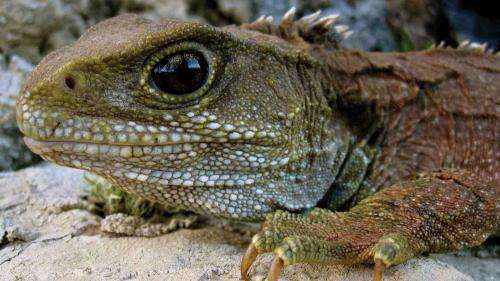Close encounters with tuatara

Anna Carter is conducting a climate modelling study on Stephens Island in Cook Strait, home to New Zealand's largest tuatara population.
Her research examines the delicate gender balance among tuatara and how it could be affected by rapid environmental change, such as a 2ºC increase in New Zealand temperatures predicted by 2050.
A key factor in how tuatara will cope lies in recent Victoria-led research which has revealed that the sex of baby tuatara is determined solely by the soil temperature surrounding eggs during incubation.
"Rapid climate warming could disrupt this system, in which warmer incubation temperatures above 21.7 ºC leads to the development of males only. My aim is to predict the potential for changes in nest temperatures, using mechanistic modelling to investigate the physical processes underlying soil temperatures.
"Accurately predicting soil temperature is more complicated than collecting field measurements, especially if rapid climate change produces new situations we haven't measured before.
"Particularly on Stephens Island, which is returning to a pre-human, forested state, we need high resolution models of soil temperatures in tuatara nests as well as a thorough understanding of their nesting behaviour, such as their choice of habitat and nest depth."
Anna's behavioural analysis of nesting female tuatara has included several month-long trips to Stephens Island, tracking the reptiles during their nocturnal nesting period in November. She has also made numerous visits to Little Barrier Island to study the small population there.
"The findings from Stephens Island will help predict how smaller, more vulnerable populations of tuatara might fare in future.
"The practical aim of my research is to provide information relevant for conservation of tuatara and other species with temperature-dependent sex determination."
Anna's research expands on work by her co-supervisor, reptile expert Dr Nicky Nelson, who heads Victoria's Conservation Biology programme, and Dr Nicola Mitchell, a former Post-Doctoral Fellow at Victoria currently based at the University of Western Australia. This research developed initial predictive models for soil temperatures and hatchling sex ratios of tuatara on North Brother Island in Cook Strait, New Zealand.
Provided by Victoria University


















